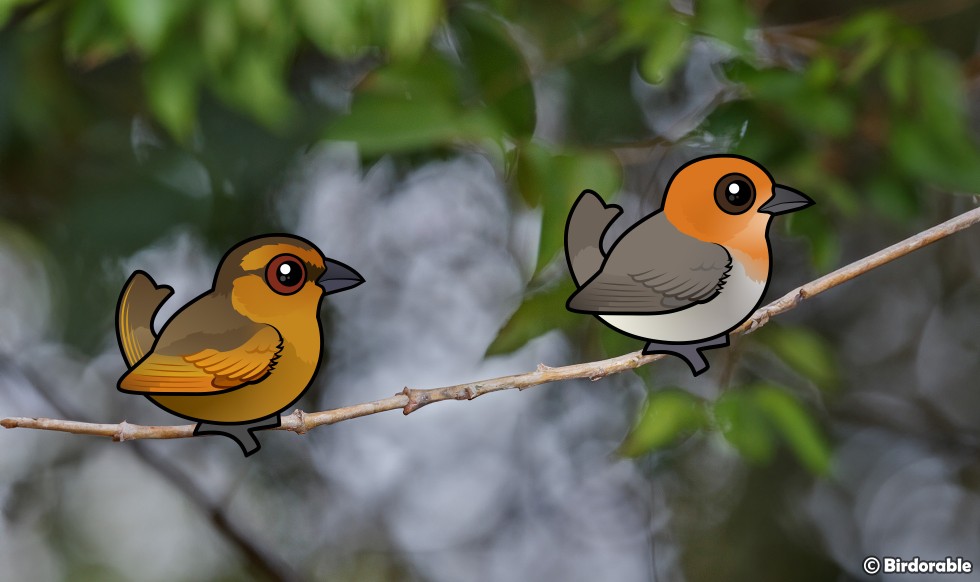A Tale of Two Tanagers: Brown Tanager & Brown-flanked Tanager

Birdorable Brown Tanager (left) and Brown-flanked Tanager (right)
Two of our newest birds here at Birdorable are the Brown Tanager and Brown-flanked Tanager. The two different species may seem similar at first glance due to their names, but they have distinct characteristics, ranges, habits, and habitats. Let's dive into the details of these two fascinating birds.
The Brown Tanager
The Brown Tanager (Orchesticus abeillei) is a small bird endemic to Brazil where it is found in the highlands of the southeast. It prefers the dense, humid forests of the Atlantic Forest biome, often at elevations between 900 and 2,000 meters. This bird's plumage is predominantly brown, as its name suggests, but it can have subtle variations in shade. The Brown Tanager is relatively elusive, making it a treat for birdwatchers who manage to spot it.
The diet of the Brown Tanager consists mainly of insects; fruits are an occasional treat. Brown Tanagers are often seen foraging alone or in pairs, though they may join mixed-species feeding flocks during certain times of the year.
The Brown Tanager is the only species in its genus, Orchesticus.
The Brown-flanked Tanager
The Brown-flanked Tanager (Thlypopsis pectoralis) is also an endemic species, this one found only in Peru. This bird favors montane forests, typically between 2,500 and 3,200 meters in elevation. The Brown-flanked Tanager is easily recognizable by its distinctive rufous-orange head and breast on an otherwise drab grey-brown body.
The Brown-flanked Tanager's diet is comprised mostly of prey items including insects, moths, and caterpillars. One interesting aspect of the Brown-flanked Tanager's behavior is its participation in mixed-species flocks. These flocks, common in Andean forests, consist of various bird species that move together while foraging. This behavior helps reduce the risk of predation and increases foraging efficiency.
The Brown-flanked Tanager is a member of the genus Thlypopsis, a group of 8 tanager species with a widespread range across parts of South America.
A Tale of Two Tanagers
For bird enthusiasts, observing these two species offers a chance to appreciate the diversity of tanagers and the unique adaptations that allow them to thrive in their respective environments. Whether it's the quiet beauty of the Brown Tanager in Brazil's highland forests or the active presence of the Brown-flanked Tanager in the Andean montane forests of Peru, each bird brings its own charm to the avian world. We proudly welcome these tropical avian friends to our big Birdorable family!

















Comments
Leave a comment
Thank you!